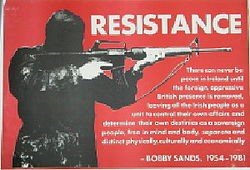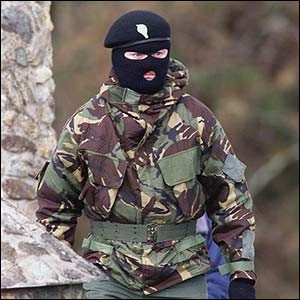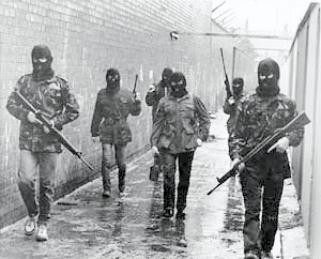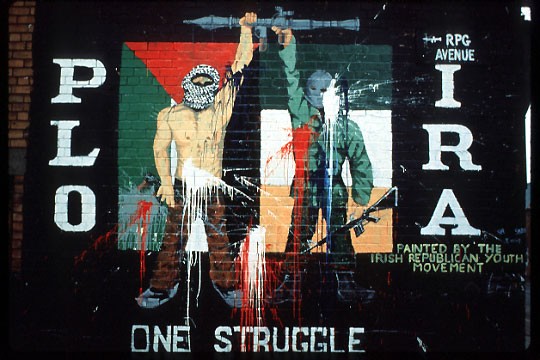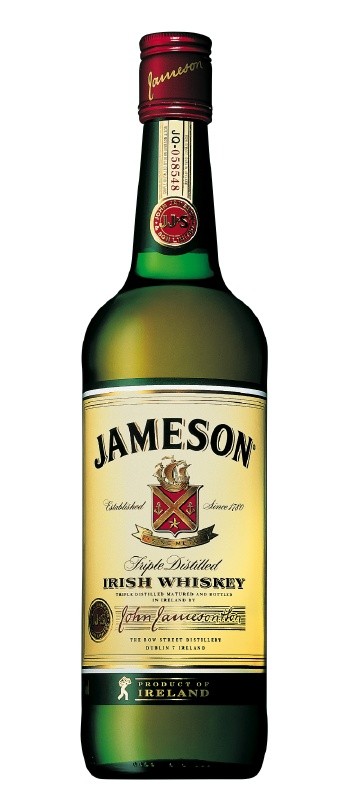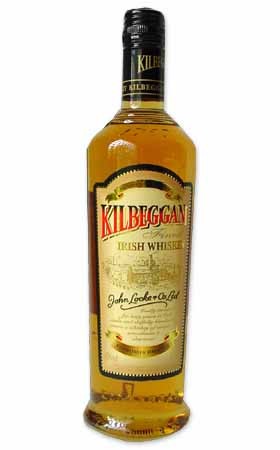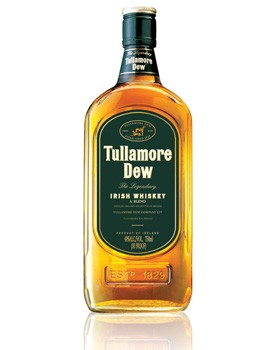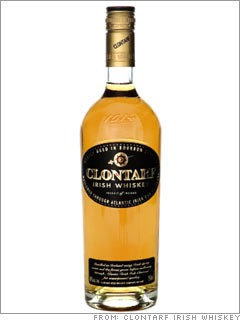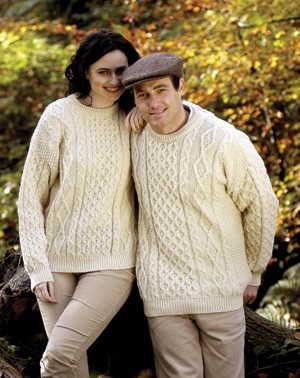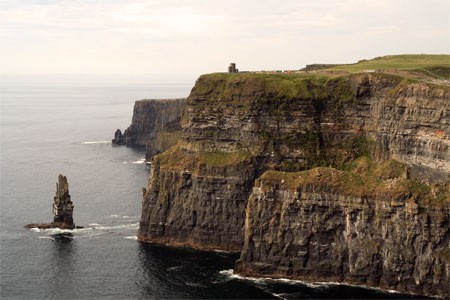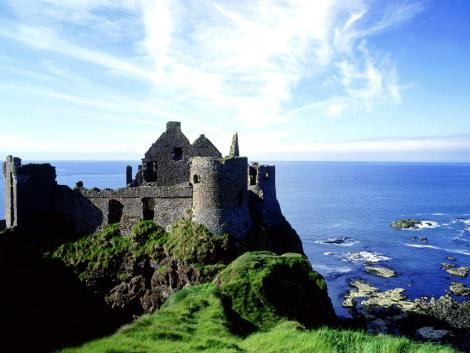
The IRA
-what is the ira?
-History
-why are they accepted?
-what is there goal?
What is the IRA?
The creation of a unified Ireland under Irish, rather than British rule. IRA used terrorist tactics to protest the Unionist/ Protestant treatment of Catholics in Northern Ireland. The IRA has always had a relatively small membership, estimated at several hundred members, organized in small, clandestine cells. Its daily operations are organized by a 7-person Army Council.
History
The emergence of the Irish Republican Army has its roots in Ireland's 20th century quest for national independence from Great Britain. In 1801, the Anglican (English Protestant) United Kingdom of Great Britain merged with Roman Catholic Ireland. For the next hundred years, Catholic Irish Nationalists opposed Protestant Irish Unionists, so named because they supported the union with Great Britain.
The first Irish Republican Army fought the British in the 1919-1921 Irish War of Independence. The Anglo-Irish treaty concluding the war divided Ireland into a Catholic Irish Free State and Protestant Northern Ireland, which became the British province, Ulster. Some elements of the IRA opposed the treaty; it was their descendents who became the terrorist PIRA in 1969.
The IRA began its terrorist attacks on the British army and police following a summer of violent rioting between Catholics and Protestants in Northern Ireland. For the next generation, the IRA carried out bombings, assassinations and other terrorist attacks against British and Irish Unionist targets.
Official talks between Sinn Féin and the British government began in 1994, and appeared to conclude with the 1998 signing of the Good Friday Agreement. The Agreement included the IRA's commitment to disarm. PIRA strategist Brian Keenan , who had spent over a generation promoting the use of violence, was instrumental in bringing about disarmament (Keenan died in 2008).By 2006, the PIRA appeared to have made good on its commitment. However, terrorist activity by the Real IRA and other paramilitary groups continues and, as of the summer of 2006, is on the rise.
In 2001, the U.S. House of Representatives Committee on International Relations released a report detailing connections between the IRA and the Revolutionary Armed Forces of Colombia (FARC) going back to 1998.
Important happenings in the history
Bloody Friday: a 1972 attack in Belfast in which 22 bombs, set off in just over an hour, killed 9 people and injured 130.
In 1979, the IRA assassinated Queen Elizabeth II's uncle, Lord Mountbatten, and three others by blowing up his boat.
In 1998, an IRA car bombing killed 29 people in Northern Ireland. The attack was severe enough to provoke threats by the Irish government that paramilitary groups must declare a cease-fire.
Why are they accepted?
The IRA is accept by the most of the citizens because the protest against catholic threats. There are a lot of people who support there ideas about the catholic threat. But, a lot of people think the way of working is not good. They are in some way kind of terrorists. They use bombs and other lethal equipment to support there statement. Normally they won't get any support because of that. But they don't use there lethal weapons on the citizens, so the people from Ireland are not as close confronted with these actions as other people in the world. The people see them as freedom fighters and not as a group of terrorists. Last years the gained a lot of political acceptation as well. The most important reason why they are accepted is because the fight against the British company's in Ireland. They think, like most of the citizens that they ''steal'' from the wealth of Ireland.
What is there goal?
It is the goal of the IRA to bring democracy, self-determination, justice, unity and freedom to all the inhabitants of Ireland. The only way to accomplish this is if the English leave Ireland and return it to the Irish. When they do, all of Ireland will, for the first time in eight hundred years, be free to decide her own future.
Though the English believe otherwise, Ireland should and will decide Ireland's fate. England, nor the minority of English placed in Ireland to displace the local Irish inhabitants has any right to decide the future of Ireland. It is necessary for the English to leave in order for life to go on in Ireland as well as in England. According to Robert Maxwell, in an editorial in The Daily Mirror, the only way the Irish problem will go away, is if the English leave. They caused the problem and their interference is now hindering the solution. "The English had created the problem, the English had the power to solve it. They could be demoralized and convinced of the necessity to cut their losses in the North". Tony Parker, in an interview with AlecFriel, puts the solution to Ireland's problems into economic terms. The English will leave the occupied Six Counties only for economic reasons. Despite their claims, they do not care for the people, only what can be gained in the venture. Insofar, the Irish venture has yielded little, and cost the English everything. The English, however, claim that if they pull out of the North now, civil war will erupt, as the IRA will slaughter the 'innocent' Protestants. However, the IRA has made clear that the proletariat Protestants in the North are actually Irish. They are Irish that have been a front for English domination and tricked into believing that England is their mother-country. Part of the IRA's objective is to force the Protestants to reject England and become free).
Irish whiskey
-what is special about the Irish whiskey?
-types of Irish whiskey
-the brands
What is special about the irish whiskey?
Irish whiskey must be distilled and aged in the Republic of Ireland or in Northern Ireland .
The contained spirits must be distilled to an alcohol by volume level of less than 94.8% from a yeast-fermented mash of cereal grains (saccharified by the diastase of malt contained therein, with or without other natural diastases) in such a way that the distillate has an aroma and flavour derived from the materials used.
The product must be aged for at least three years in wooden casks.
If the spirits comprise a blend of two or more such distillates, the product is referred to as a "Blended" Irish whiskey.
There are several types of whiskey common to Ireland, including those referred to as Single Malt, Single Grain, and Blended Irish Whiskey. However, in contrast to the Scotch Whisky Regulations of 2009 , the Irish Whiskey Act of 1980 does not actually contain a definition of the terms "Single Malt Irish Whiskey" or "Single Grain Irish Whiskey" or specific rules governing their production, so the exact definitions of these terms may not be clearly established. The meaning of such terms can vary substantially from producer to producer. For example, some Scottish whisky that could have been considered "Single Malt" prior to 2009 was distilled using continuous stills , and there is an American whiskey marketed as a "Single Malt" that is made from rye grain. Both of these practices would violate the 2009 Scotch Whisky Regulations definition of "Single Malt Scotch Whisky" but may not be prohibited for "Single Malt Irish Whiskey".
The word whiskey is an Anglicisation of the Goidelic branch of languages including Irish, Scottish Gaelic and Manx as "uisce beatha" which translates as "water of life". (The Craythur is a modern Irish term for whiskey.
Most Irish pot still whiskey is distilled three times, while Scotch whisky , apart from Auchentoshan , is distilled twice. Peat is rarely used in the malting process, so that Irish Whiskey has a smoother finish as opposed to the smoky, earthy overtones common to some Scotches. There are notable exceptions to these "rules" in both countries; an example is Connemara Peated Irish Malt (double distilled) whiskey from the independent Cooley Distillery in Riverstown, Cooley, County Louth.
Although Scotland sustains approximately 90 distilleries, Ireland has only four (although each produces a number of different whiskeys): economic difficulties in the last few centuries have led to a great number of mergers and closures. Currently those distilleries operating in Ireland are: New Midleton Distillery (Jamesons, Powers, Paddy, Midleton, Redbreast, and others, plus the independently sold rarity Green Spot), Old Bushmills Distillery (all Old Bushmills, Black Bush, 1608, Bushmills 10-, 12- and 16- and 21-year-old single malts), Cooley Distillery (Connemara, some Knappogues, (the '94 was by Bushmills) Michael Collins, Tyrconnell, and others) and the recently reopened Kilbeggan Distillery, which began distilling again in 2007 and released samples of its still-maturing spirit at 1 month, 1 year, and 2 years worth of aging in 2009 as "The Spirit of Kilbeggan." Irish Distillers ' Midleton distillery has been part of the Pernod-Ricard conglomerate since 1988. Bushmills was part of the Irish Distillers group from 1972 until 2005 when it was sold to Diageo . In addition to the 4 distilleries, there are a number of independently owned Irish Whiskey brands, such Tullamore Dew and The Irishman. The Irishman specialise in re-creating some of Irelands lost whisky treasures such as Potstill whiskies.
Types of Irish whiskey
Irish whiskey comes in several forms. Most Irish whiskey contains alcohol continuously distilled from a mixture of malted and unmalted barley and other grains. This mixed-grain whiskey is much lighter and more neutral in flavour than the type called single malt , and most such mixed-grain whiskey is blended with single malts to produce relatively light flavoured blended whiskey . However, there are a few Irish whiskies made from 100% malted barley and distilled using pot stills . Such a whiskey, when produced by a single distillery, is called a single malt whiskey
The brands
Black Bush
Bushmills
Clonmel
Coleraine
Connemara
Cooley
Crested Ten
Greenore
Hewitts
Inishowen
Jameson
Kilbeggan
Knappogue Castle
Lockes
Magilligan
Midleton Very Rare
Millars Special Reserve
Murphy’s
Old Midleton
Paddy Whiskey
Redbreast
Shannon Grain
Slaney
Suir
Tullamore Dew
Tyrconnell
There are only 3 distilleries
Bushmills
Cooley
Midleton
Politics in Ireland
-what kind of government
-voice of the folk
What kind of government
Ireland is a parliamentary , representative democratic republic and a member state of the European Union. While the head of state is the popularly elected President of Ireland , this is a largely ceremonial position with real political power being vested in the indirectly elected Taoiseach (prime minister ) who is the head of the government .
Executive power is exercised by the government which consists of no more than 15 cabinet ministers, inclusive of the Taoiseach and Tánaiste (deputy prime minister). Legislative power is vested in the Oireachtas , the bicameral national parliament, which consists of Dáil Éireann, Seanad Éireann and the President of Ireland . The judiciary is independent of the executive and the legislature. The head of the judiciary is the Chief Justice who presides over the Supreme Court .
While there are a number of political parties in the state, the political landscape has been dominated for decades by Fianna Fáil and Fine Gael , historically opposed and competing entities, which both occupy the traditional centre ground. From the 1930s until 2011 they were the largest and second largest parties respectively. Both parties trace their roots back to the opposing side of the civil war . The Labour Party , historically the state's third political party has only ever been in power when in coalition with either of the two main parties. In 2011 there was a major political realignment in Ireland, with Fine Gael becoming the largest party, Labour the second, and Fianna Fáil dropping to third following a collapse in support.
Voice of the folk
When you compare Ireland to The Netherlands you see a lot of similarity's. Ireland got election's, Holland aswell. There is not much to say about the voice of the folk, but they can let there voice speak during the election's.
Geographic from Ireland
-how is the country divided
-about the landscape
How is the country divided
Traditionally, Ireland is subdivided into four provinces : Connacht (west), Leinster (east), Munster (south), and Ulster (north). In a system that developed between the 13th and 17th centuries, Ireland has thirty-two traditional counties . Twenty-six of the counties are in the Republic of Ireland and six counties are in Northern Ireland. The six counties that constitute Northern Ireland are all in the province of Ulster (which has nine counties in total). As such, Ulster is often used as a synonym for Northern Ireland, although the two are not coterminous.
In the Republic of Ireland counties form the basis of the system of local government. Counties Dublin , Cork , Limerick , Galway , Waterford and Tipperary have been broken up into smaller administrative areas. However, they are still treated as counties for cultural and some official purposes, for example post and by the Ordnance Survey Ireland . Counties in Northern Ireland are no longer used for local governmental purposes, but, as in the Republic, their traditional boundaries are still used for informal purposes such as sports leagues and in cultural or tourism contexts.
About the landscape
Ireland consists of a mostly flat low-lying area in the midlands, ringed by mountain ranges such as (beginning in County Kerry and working counter-clockwise) the Macgillycuddy's Reeks , Comeragh Mountains , Blackstairs Mountains , Wicklow Mountains , the Mournes , Glens of Antrim , Sperrin Mountains , Bluestack Mountains , Derryveagh Mountains , Ox Mountains , Nephinbeg Mountains and the Twelve Bens /Maumturks group. Some mountain ranges are further inland in the south of Ireland, such as the Galtee Mountains , the highest inland range, Silvermine and Slieve Bloom Mountains . The highest peak is Carrauntoohil, 1,038 m (3,405 ft) high,is in the Macgillycuddy's Reeks, a range of glacier-carved sandstone mountains in County Kerry, in the southwest of the island. The mountains are not high - only three peaks are over 1,000 m (3,281 ft) and another 457 exceed 500 m (1,640 ft).Lough Lene , the Lake County
The main river in Ireland is the River Shannon , 386 km (240 mi), the longest river in either Ireland or Great Britain , which separates the boggy midlands of Ireland from the West of Ireland. The river develops into three lakes along its course, Lough Allen , Lough Ree , and Lough Derg . Of these, Lough Derg is the largest. The River Shannon enters the Atlantic Ocean after Limerick city at the Shannon Estuary. Other major rivers include the River Liffey , River Lee , River Blackwater , River Nore, River Suir , River Barrow , River Bann , River Foyle, River Erne , and River Boyne . (See the list of rivers in Ireland .)
Lough Neagh , in Ulster, is the largest lake in Ireland and the UK. Legend has it that a giant, Fionn mac Cumhail , was fighting with another in Scotland, and enraged, scooped out a lump of earth, which he threw. It fell into the Irish Sea , creating the Isle of Man , while the hole filled up with water to become Lough Neagh. Other large lakes include Lough Erne and Lough Corrib .
Killary Harbour forms a natural border between Galway and Mayo for 16km
Beginning with County Donegal, Lough Swilly separates one side of the Inishowen peninsula . Lough Foyle on the other side, is one of Ireland's larger inlets, situated between County Donegal and County Londonderry .Further round the coast is Belfast Lough , between County Antrim and County Down. Also in County Down is Strangford Lough , actually an inlet partially separating the Ards peninsula from the mainland. Further down the coast, Carlingford Lough is situated between Down and County Louth .
Dublin Bay is the next sizable inlet, while the eastern coast of Ireland is mostly uniform until Wexford Harbour at the mouth of the River Slaney . On the southern coast, Waterford Harbour is situated at the mouth of the (into which the other two of the Three Sisters (River Nore and River Barrow ) flow). The next major inlet is Cork Harbour , at the mouth of the River Lee, in which Great Island is situated.
Dunmanus Bay , Bantry Bay, Kenmare estuary and Dingle Bay are all inlets between the peninsulas of County Kerry . North of these is the Shannon estuary . Between north County Clare and County Galway is Galway Bay . Clew Bay is located on the coast of County Mayo, south of Achill Island , while Broadhaven Bay , Blacksod Bay and Sruth Fada Conn bays are situated on the north west part of Connaught in North Mayo. Killala Bay is on the north east coast of Mayo. Donegal Bay is a major inlet between County Donegal and County Sligo .
Malin Head is the most northerly point in Ireland, while Mizen Head is one of the most southern points , hence the term "Malin head to Mizen head" (or the reverse) is used for anything applying to the island of Ireland as a whole. Carnsore Point is another extreme point of Ireland , being the southeastern most point of Ireland. Further along the coast is Hook Head while the Old Head of Kinsale in is one of many headlands along the south coast of Ireland.
Loop Head is the headland at which County Clare comes to a point on the west coast of Ireland, with the Atlantic on the north, and further inland on the south, the Shannon estuary. Hag's Head is another headland further up Clare's north/western coastline, with the Cliffs of Moher along the coastline north of the point.
Erris Head is the northwesternmost point of Connacht .
The history
-the beginning from Ireland
-Ireland and England
The beginning from Ireland
Most of Ireland was covered with ice until the end of the last ice age over 9,000 years ago. Sea levels were lower and Ireland, like Great Britain, was part of continental Europe . Mesolithic stone age inhabitants arrived some time after 8,000 BC and agriculture followed with the Neolithic Age around 4,500 to 4,000 BC when sheep, goats, cattle and cereals were imported from the Iberian peninsula .
At the Céide Fields, preserved beneath a blanket of peat in present-day County Mayo , is an extensive field system, arguably the oldest in the world, dating from not long after this period. Consisting of small divisions separated by dry-stone walls , the fields were farmed for several centuries between 3,500 and 3,000 BC. Wheat and barley were the principal crops.
The Bronze Age – defined by the use of metal – began around 2,500 BC, with technology changing people's everyday lives during this period through innovations such as the wheel , harnessing oxen , weaving textiles , brewing alcohol, and skillful metalworking , which produced new weapons and tools, along with fine gold decoration and jewellery, such as brooches and torcs . According to John T. Koch and others, Ireland in the Late Bronze Age was part of a maritime trading-networked culture called the Atlantic Bronze Age that also included Britain, France, Spain and Portugal where Celtic languages developed
Ireland and England
On May 1, 1169, an expedition of Cambro -Norman knights with an army of about six hundred landed at Bannow Strand in present-day County Wexford . It was led by Richard de Clare , called Strongbow due to his prowess as an archer. The invasion, which coincided with a period of renewed Norman expansion, was at the invitation of Dermot Mac Murrough , the king of Leinster .
In 1166, Mac Murrough had fled to Anjou, France following a war involving Tighearnán Ua Ruairc , of Breifne , and sought the assistance of the Angevin king, Henry II , in recapturing his kingdom. In 1171, Henry arrived in Ireland in order to review the general progress of the expedition. He wanted to re-exert royal authority over the invasion which was expanding beyond his control. Henry successfully re-imposed his authority over Strongbow and the Cambro-Norman warlords and persuaded many of the Irish kings to accept him as their overlord, an arrangement confirmed in the 1175 Treaty of Windsor.
The invasion was legitimised by the provisions of the Papal Bull Laudabiliter , issued by Adrian IV in 1155. The bull encouraged Henry to take control in Ireland in order to oversee the financial and administrative reorganisation of the Irish Church and its integration into the Roman Church system Some restructuring had already begun at the ecclesiastical level following the Synod of Kells in 1152. There has been significant controversy regarding authenticity of Laudabiliter, and there is no general agreement as to whether the bull was genuine or a forgery.
In 1172, the new pope, Alexander III , further encouraged Henry to advance the integration of the Irish Church with Rome. Henry was authorised to impose a tithe of one penny per hearth as an annual contribution. This church levy, called Peter's Pence , is still extant in Ireland as a voluntary donation. In turn, Henry accepted the title of Lord of Ireland which Henry conferred on his younger son, John Lackland, in 1185. This defined the Irish state as the Lordship of Ireland . When Henry's successor died unexpectedly in 1199, John inherited the crown of England and retained the Lordship of Ireland.
Typical clothing
-what is the typical clothing piece from Ireland
What is the typical clothing piece from Ireland
as far as traditional Irish clothing goes, most people immediately point to the kilt, a type of apparel that has been mocked mercilessly over the years. In reality, the history of Irish fashion extends far beyond the simple kilt to include a number of distinctive pieces, such as chunky sweaters and fringed cloaks. Several of the mainstays of traditional Irish clothing continue to influence international fashion in the present day.
-what is the ira?
-History
-why are they accepted?
-what is there goal?
What is the IRA?
The creation of a unified Ireland under Irish, rather than British rule. IRA used terrorist tactics to protest the Unionist/ Protestant treatment of Catholics in Northern Ireland. The IRA has always had a relatively small membership, estimated at several hundred members, organized in small, clandestine cells. Its daily operations are organized by a 7-person Army Council.
History
The emergence of the Irish Republican Army has its roots in Ireland's 20th century quest for national independence from Great Britain. In 1801, the Anglican (English Protestant) United Kingdom of Great Britain merged with Roman Catholic Ireland. For the next hundred years, Catholic Irish Nationalists opposed Protestant Irish Unionists, so named because they supported the union with Great Britain.
The first Irish Republican Army fought the British in the 1919-1921 Irish War of Independence. The Anglo-Irish treaty concluding the war divided Ireland into a Catholic Irish Free State and Protestant Northern Ireland, which became the British province, Ulster. Some elements of the IRA opposed the treaty; it was their descendents who became the terrorist PIRA in 1969.
The IRA began its terrorist attacks on the British army and police following a summer of violent rioting between Catholics and Protestants in Northern Ireland. For the next generation, the IRA carried out bombings, assassinations and other terrorist attacks against British and Irish Unionist targets.
Official talks between Sinn Féin and the British government began in 1994, and appeared to conclude with the 1998 signing of the Good Friday Agreement. The Agreement included the IRA's commitment to disarm. PIRA strategist Brian Keenan , who had spent over a generation promoting the use of violence, was instrumental in bringing about disarmament (Keenan died in 2008).By 2006, the PIRA appeared to have made good on its commitment. However, terrorist activity by the Real IRA and other paramilitary groups continues and, as of the summer of 2006, is on the rise.
In 2001, the U.S. House of Representatives Committee on International Relations released a report detailing connections between the IRA and the Revolutionary Armed Forces of Colombia (FARC) going back to 1998.
Important happenings in the history
Bloody Friday: a 1972 attack in Belfast in which 22 bombs, set off in just over an hour, killed 9 people and injured 130.
In 1979, the IRA assassinated Queen Elizabeth II's uncle, Lord Mountbatten, and three others by blowing up his boat.
In 1998, an IRA car bombing killed 29 people in Northern Ireland. The attack was severe enough to provoke threats by the Irish government that paramilitary groups must declare a cease-fire.
Why are they accepted?
The IRA is accept by the most of the citizens because the protest against catholic threats. There are a lot of people who support there ideas about the catholic threat. But, a lot of people think the way of working is not good. They are in some way kind of terrorists. They use bombs and other lethal equipment to support there statement. Normally they won't get any support because of that. But they don't use there lethal weapons on the citizens, so the people from Ireland are not as close confronted with these actions as other people in the world. The people see them as freedom fighters and not as a group of terrorists. Last years the gained a lot of political acceptation as well. The most important reason why they are accepted is because the fight against the British company's in Ireland. They think, like most of the citizens that they ''steal'' from the wealth of Ireland.
What is there goal?
It is the goal of the IRA to bring democracy, self-determination, justice, unity and freedom to all the inhabitants of Ireland. The only way to accomplish this is if the English leave Ireland and return it to the Irish. When they do, all of Ireland will, for the first time in eight hundred years, be free to decide her own future.
Though the English believe otherwise, Ireland should and will decide Ireland's fate. England, nor the minority of English placed in Ireland to displace the local Irish inhabitants has any right to decide the future of Ireland. It is necessary for the English to leave in order for life to go on in Ireland as well as in England. According to Robert Maxwell, in an editorial in The Daily Mirror, the only way the Irish problem will go away, is if the English leave. They caused the problem and their interference is now hindering the solution. "The English had created the problem, the English had the power to solve it. They could be demoralized and convinced of the necessity to cut their losses in the North". Tony Parker, in an interview with AlecFriel, puts the solution to Ireland's problems into economic terms. The English will leave the occupied Six Counties only for economic reasons. Despite their claims, they do not care for the people, only what can be gained in the venture. Insofar, the Irish venture has yielded little, and cost the English everything. The English, however, claim that if they pull out of the North now, civil war will erupt, as the IRA will slaughter the 'innocent' Protestants. However, the IRA has made clear that the proletariat Protestants in the North are actually Irish. They are Irish that have been a front for English domination and tricked into believing that England is their mother-country. Part of the IRA's objective is to force the Protestants to reject England and become free).
Irish whiskey
-what is special about the Irish whiskey?
-types of Irish whiskey
-the brands
What is special about the irish whiskey?
Irish whiskey must be distilled and aged in the Republic of Ireland or in Northern Ireland .
The contained spirits must be distilled to an alcohol by volume level of less than 94.8% from a yeast-fermented mash of cereal grains (saccharified by the diastase of malt contained therein, with or without other natural diastases) in such a way that the distillate has an aroma and flavour derived from the materials used.
The product must be aged for at least three years in wooden casks.
If the spirits comprise a blend of two or more such distillates, the product is referred to as a "Blended" Irish whiskey.
There are several types of whiskey common to Ireland, including those referred to as Single Malt, Single Grain, and Blended Irish Whiskey. However, in contrast to the Scotch Whisky Regulations of 2009 , the Irish Whiskey Act of 1980 does not actually contain a definition of the terms "Single Malt Irish Whiskey" or "Single Grain Irish Whiskey" or specific rules governing their production, so the exact definitions of these terms may not be clearly established. The meaning of such terms can vary substantially from producer to producer. For example, some Scottish whisky that could have been considered "Single Malt" prior to 2009 was distilled using continuous stills , and there is an American whiskey marketed as a "Single Malt" that is made from rye grain. Both of these practices would violate the 2009 Scotch Whisky Regulations definition of "Single Malt Scotch Whisky" but may not be prohibited for "Single Malt Irish Whiskey".
The word whiskey is an Anglicisation of the Goidelic branch of languages including Irish, Scottish Gaelic and Manx as "uisce beatha" which translates as "water of life". (The Craythur is a modern Irish term for whiskey.
Most Irish pot still whiskey is distilled three times, while Scotch whisky , apart from Auchentoshan , is distilled twice. Peat is rarely used in the malting process, so that Irish Whiskey has a smoother finish as opposed to the smoky, earthy overtones common to some Scotches. There are notable exceptions to these "rules" in both countries; an example is Connemara Peated Irish Malt (double distilled) whiskey from the independent Cooley Distillery in Riverstown, Cooley, County Louth.
Although Scotland sustains approximately 90 distilleries, Ireland has only four (although each produces a number of different whiskeys): economic difficulties in the last few centuries have led to a great number of mergers and closures. Currently those distilleries operating in Ireland are: New Midleton Distillery (Jamesons, Powers, Paddy, Midleton, Redbreast, and others, plus the independently sold rarity Green Spot), Old Bushmills Distillery (all Old Bushmills, Black Bush, 1608, Bushmills 10-, 12- and 16- and 21-year-old single malts), Cooley Distillery (Connemara, some Knappogues, (the '94 was by Bushmills) Michael Collins, Tyrconnell, and others) and the recently reopened Kilbeggan Distillery, which began distilling again in 2007 and released samples of its still-maturing spirit at 1 month, 1 year, and 2 years worth of aging in 2009 as "The Spirit of Kilbeggan." Irish Distillers ' Midleton distillery has been part of the Pernod-Ricard conglomerate since 1988. Bushmills was part of the Irish Distillers group from 1972 until 2005 when it was sold to Diageo . In addition to the 4 distilleries, there are a number of independently owned Irish Whiskey brands, such Tullamore Dew and The Irishman. The Irishman specialise in re-creating some of Irelands lost whisky treasures such as Potstill whiskies.
Types of Irish whiskey
Irish whiskey comes in several forms. Most Irish whiskey contains alcohol continuously distilled from a mixture of malted and unmalted barley and other grains. This mixed-grain whiskey is much lighter and more neutral in flavour than the type called single malt , and most such mixed-grain whiskey is blended with single malts to produce relatively light flavoured blended whiskey . However, there are a few Irish whiskies made from 100% malted barley and distilled using pot stills . Such a whiskey, when produced by a single distillery, is called a single malt whiskey
The brands
Black Bush
Bushmills
Clonmel
Coleraine
Connemara
Cooley
Crested Ten
Greenore
Hewitts
Inishowen
Jameson
Kilbeggan
Knappogue Castle
Lockes
Magilligan
Midleton Very Rare
Millars Special Reserve
Murphy’s
Old Midleton
Paddy Whiskey
Redbreast
Shannon Grain
Slaney
Suir
Tullamore Dew
Tyrconnell
There are only 3 distilleries
Bushmills
Cooley
Midleton
Politics in Ireland
-what kind of government
-voice of the folk
What kind of government
Ireland is a parliamentary , representative democratic republic and a member state of the European Union. While the head of state is the popularly elected President of Ireland , this is a largely ceremonial position with real political power being vested in the indirectly elected Taoiseach (prime minister ) who is the head of the government .
Executive power is exercised by the government which consists of no more than 15 cabinet ministers, inclusive of the Taoiseach and Tánaiste (deputy prime minister). Legislative power is vested in the Oireachtas , the bicameral national parliament, which consists of Dáil Éireann, Seanad Éireann and the President of Ireland . The judiciary is independent of the executive and the legislature. The head of the judiciary is the Chief Justice who presides over the Supreme Court .
While there are a number of political parties in the state, the political landscape has been dominated for decades by Fianna Fáil and Fine Gael , historically opposed and competing entities, which both occupy the traditional centre ground. From the 1930s until 2011 they were the largest and second largest parties respectively. Both parties trace their roots back to the opposing side of the civil war . The Labour Party , historically the state's third political party has only ever been in power when in coalition with either of the two main parties. In 2011 there was a major political realignment in Ireland, with Fine Gael becoming the largest party, Labour the second, and Fianna Fáil dropping to third following a collapse in support.
Voice of the folk
When you compare Ireland to The Netherlands you see a lot of similarity's. Ireland got election's, Holland aswell. There is not much to say about the voice of the folk, but they can let there voice speak during the election's.
Geographic from Ireland
-how is the country divided
-about the landscape
How is the country divided
Traditionally, Ireland is subdivided into four provinces : Connacht (west), Leinster (east), Munster (south), and Ulster (north). In a system that developed between the 13th and 17th centuries, Ireland has thirty-two traditional counties . Twenty-six of the counties are in the Republic of Ireland and six counties are in Northern Ireland. The six counties that constitute Northern Ireland are all in the province of Ulster (which has nine counties in total). As such, Ulster is often used as a synonym for Northern Ireland, although the two are not coterminous.
In the Republic of Ireland counties form the basis of the system of local government. Counties Dublin , Cork , Limerick , Galway , Waterford and Tipperary have been broken up into smaller administrative areas. However, they are still treated as counties for cultural and some official purposes, for example post and by the Ordnance Survey Ireland . Counties in Northern Ireland are no longer used for local governmental purposes, but, as in the Republic, their traditional boundaries are still used for informal purposes such as sports leagues and in cultural or tourism contexts.
About the landscape
Ireland consists of a mostly flat low-lying area in the midlands, ringed by mountain ranges such as (beginning in County Kerry and working counter-clockwise) the Macgillycuddy's Reeks , Comeragh Mountains , Blackstairs Mountains , Wicklow Mountains , the Mournes , Glens of Antrim , Sperrin Mountains , Bluestack Mountains , Derryveagh Mountains , Ox Mountains , Nephinbeg Mountains and the Twelve Bens /Maumturks group. Some mountain ranges are further inland in the south of Ireland, such as the Galtee Mountains , the highest inland range, Silvermine and Slieve Bloom Mountains . The highest peak is Carrauntoohil, 1,038 m (3,405 ft) high,is in the Macgillycuddy's Reeks, a range of glacier-carved sandstone mountains in County Kerry, in the southwest of the island. The mountains are not high - only three peaks are over 1,000 m (3,281 ft) and another 457 exceed 500 m (1,640 ft).Lough Lene , the Lake County
The main river in Ireland is the River Shannon , 386 km (240 mi), the longest river in either Ireland or Great Britain , which separates the boggy midlands of Ireland from the West of Ireland. The river develops into three lakes along its course, Lough Allen , Lough Ree , and Lough Derg . Of these, Lough Derg is the largest. The River Shannon enters the Atlantic Ocean after Limerick city at the Shannon Estuary. Other major rivers include the River Liffey , River Lee , River Blackwater , River Nore, River Suir , River Barrow , River Bann , River Foyle, River Erne , and River Boyne . (See the list of rivers in Ireland .)
Lough Neagh , in Ulster, is the largest lake in Ireland and the UK. Legend has it that a giant, Fionn mac Cumhail , was fighting with another in Scotland, and enraged, scooped out a lump of earth, which he threw. It fell into the Irish Sea , creating the Isle of Man , while the hole filled up with water to become Lough Neagh. Other large lakes include Lough Erne and Lough Corrib .
Killary Harbour forms a natural border between Galway and Mayo for 16km
Beginning with County Donegal, Lough Swilly separates one side of the Inishowen peninsula . Lough Foyle on the other side, is one of Ireland's larger inlets, situated between County Donegal and County Londonderry .Further round the coast is Belfast Lough , between County Antrim and County Down. Also in County Down is Strangford Lough , actually an inlet partially separating the Ards peninsula from the mainland. Further down the coast, Carlingford Lough is situated between Down and County Louth .
Dublin Bay is the next sizable inlet, while the eastern coast of Ireland is mostly uniform until Wexford Harbour at the mouth of the River Slaney . On the southern coast, Waterford Harbour is situated at the mouth of the (into which the other two of the Three Sisters (River Nore and River Barrow ) flow). The next major inlet is Cork Harbour , at the mouth of the River Lee, in which Great Island is situated.
Dunmanus Bay , Bantry Bay, Kenmare estuary and Dingle Bay are all inlets between the peninsulas of County Kerry . North of these is the Shannon estuary . Between north County Clare and County Galway is Galway Bay . Clew Bay is located on the coast of County Mayo, south of Achill Island , while Broadhaven Bay , Blacksod Bay and Sruth Fada Conn bays are situated on the north west part of Connaught in North Mayo. Killala Bay is on the north east coast of Mayo. Donegal Bay is a major inlet between County Donegal and County Sligo .
Malin Head is the most northerly point in Ireland, while Mizen Head is one of the most southern points , hence the term "Malin head to Mizen head" (or the reverse) is used for anything applying to the island of Ireland as a whole. Carnsore Point is another extreme point of Ireland , being the southeastern most point of Ireland. Further along the coast is Hook Head while the Old Head of Kinsale in is one of many headlands along the south coast of Ireland.
Loop Head is the headland at which County Clare comes to a point on the west coast of Ireland, with the Atlantic on the north, and further inland on the south, the Shannon estuary. Hag's Head is another headland further up Clare's north/western coastline, with the Cliffs of Moher along the coastline north of the point.
Erris Head is the northwesternmost point of Connacht .
The history
-the beginning from Ireland
-Ireland and England
The beginning from Ireland
Most of Ireland was covered with ice until the end of the last ice age over 9,000 years ago. Sea levels were lower and Ireland, like Great Britain, was part of continental Europe . Mesolithic stone age inhabitants arrived some time after 8,000 BC and agriculture followed with the Neolithic Age around 4,500 to 4,000 BC when sheep, goats, cattle and cereals were imported from the Iberian peninsula .
At the Céide Fields, preserved beneath a blanket of peat in present-day County Mayo , is an extensive field system, arguably the oldest in the world, dating from not long after this period. Consisting of small divisions separated by dry-stone walls , the fields were farmed for several centuries between 3,500 and 3,000 BC. Wheat and barley were the principal crops.
The Bronze Age – defined by the use of metal – began around 2,500 BC, with technology changing people's everyday lives during this period through innovations such as the wheel , harnessing oxen , weaving textiles , brewing alcohol, and skillful metalworking , which produced new weapons and tools, along with fine gold decoration and jewellery, such as brooches and torcs . According to John T. Koch and others, Ireland in the Late Bronze Age was part of a maritime trading-networked culture called the Atlantic Bronze Age that also included Britain, France, Spain and Portugal where Celtic languages developed
Ireland and England
On May 1, 1169, an expedition of Cambro -Norman knights with an army of about six hundred landed at Bannow Strand in present-day County Wexford . It was led by Richard de Clare , called Strongbow due to his prowess as an archer. The invasion, which coincided with a period of renewed Norman expansion, was at the invitation of Dermot Mac Murrough , the king of Leinster .
In 1166, Mac Murrough had fled to Anjou, France following a war involving Tighearnán Ua Ruairc , of Breifne , and sought the assistance of the Angevin king, Henry II , in recapturing his kingdom. In 1171, Henry arrived in Ireland in order to review the general progress of the expedition. He wanted to re-exert royal authority over the invasion which was expanding beyond his control. Henry successfully re-imposed his authority over Strongbow and the Cambro-Norman warlords and persuaded many of the Irish kings to accept him as their overlord, an arrangement confirmed in the 1175 Treaty of Windsor.
The invasion was legitimised by the provisions of the Papal Bull Laudabiliter , issued by Adrian IV in 1155. The bull encouraged Henry to take control in Ireland in order to oversee the financial and administrative reorganisation of the Irish Church and its integration into the Roman Church system Some restructuring had already begun at the ecclesiastical level following the Synod of Kells in 1152. There has been significant controversy regarding authenticity of Laudabiliter, and there is no general agreement as to whether the bull was genuine or a forgery.
In 1172, the new pope, Alexander III , further encouraged Henry to advance the integration of the Irish Church with Rome. Henry was authorised to impose a tithe of one penny per hearth as an annual contribution. This church levy, called Peter's Pence , is still extant in Ireland as a voluntary donation. In turn, Henry accepted the title of Lord of Ireland which Henry conferred on his younger son, John Lackland, in 1185. This defined the Irish state as the Lordship of Ireland . When Henry's successor died unexpectedly in 1199, John inherited the crown of England and retained the Lordship of Ireland.
Typical clothing
-what is the typical clothing piece from Ireland
What is the typical clothing piece from Ireland
as far as traditional Irish clothing goes, most people immediately point to the kilt, a type of apparel that has been mocked mercilessly over the years. In reality, the history of Irish fashion extends far beyond the simple kilt to include a number of distinctive pieces, such as chunky sweaters and fringed cloaks. Several of the mainstays of traditional Irish clothing continue to influence international fashion in the present day.


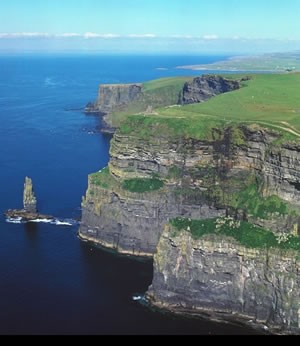
IRELAND
A beautiful country, a lot of
beautiful nature, many cultural aspects. But there is more! Look further to explore Ireland!
A beautiful country, a lot of
beautiful nature, many cultural aspects. But there is more! Look further to explore Ireland!


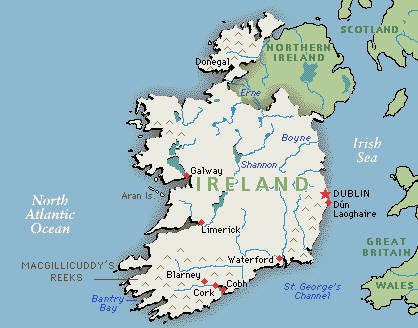
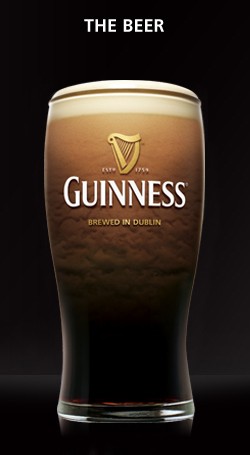
Ireland
